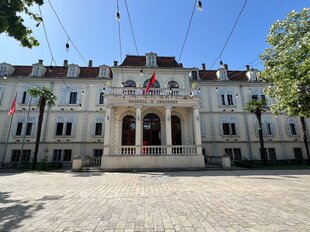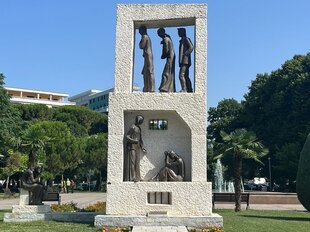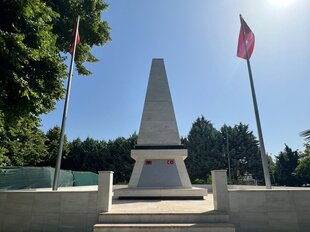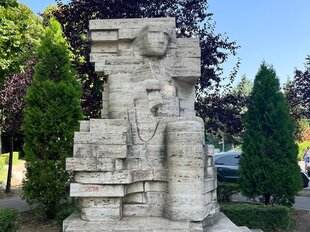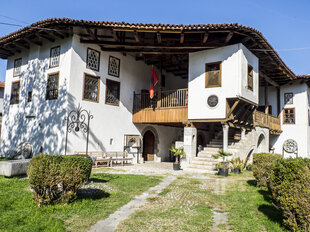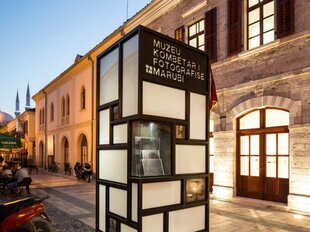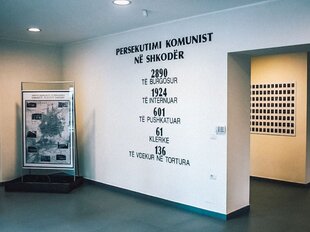Museum & Cultural Objects
Welcome to our Museum and Cultural Object City Tour! Embark on a fascinating journey through the heart of our city's rich history and heritage. This immersive experience will take you on a curated exploration of carefully selected museums and cultural landmarks, showcasing the diverse tapestry of our past.
Suggestion: You can explore by walking or by bike

Point A: Municipality of Shkodra
Start your journey in front of Municipality of Shkodra at 13 Dhjetori street where you can see some of most important cultural objects including: The Commemorating Monument of Victims During The Communism Period , Monument of Gjergj Fishta, The Monument of Hasan Riza Pasha and The Memorial of Democracy Heroes.

Point B: Shkodra Historical Museum
Continue at point B where is located Shkodra History Museum . The Museum has three main sections: the ethnographic fund, the archaeological fund, the visual arts fund and the library.In 1996 the Historical Museum of Shkodra was transferred in the now restored monumental building a traditional Shkodran house of “Oso Kuka, where it is still today.

Point C: Marubi National Museum of Photography
Continue your journey at point C where is located one of the most important museum in the city Marubi National Museum of Photography. The National Museum of Photography ‘Marubi' was established as an absolute need to identify and promote the photographic archive created by the Marubi Dynasty and other city of Shkodra photographers, a cultural heritage unique in its kind.
On the way to Point D you will see another cultural monument The Monument of Saint Mother Teresa.

Point D: Site of Witness and Memory
At point D is located Site of Witness and Memory. The “Site of Witness and Memory” is the first site of remembrance in Albania, which commemorates the victims of the communist regime in Shkodër.

Point E: Diocesan Museum Shkodër – Pult
End your exploratory tour of the museum and cultural objects at point D where the Diocesan Museum Shkodër - Pult is located. The Diocesan Museum is born from the need to collect, preserve and make available the historical heritage related to the religion and culture of the Albanian people, which specifically refers to the territorial area that is part of the Archdiocese of Shkodër-Pult.

